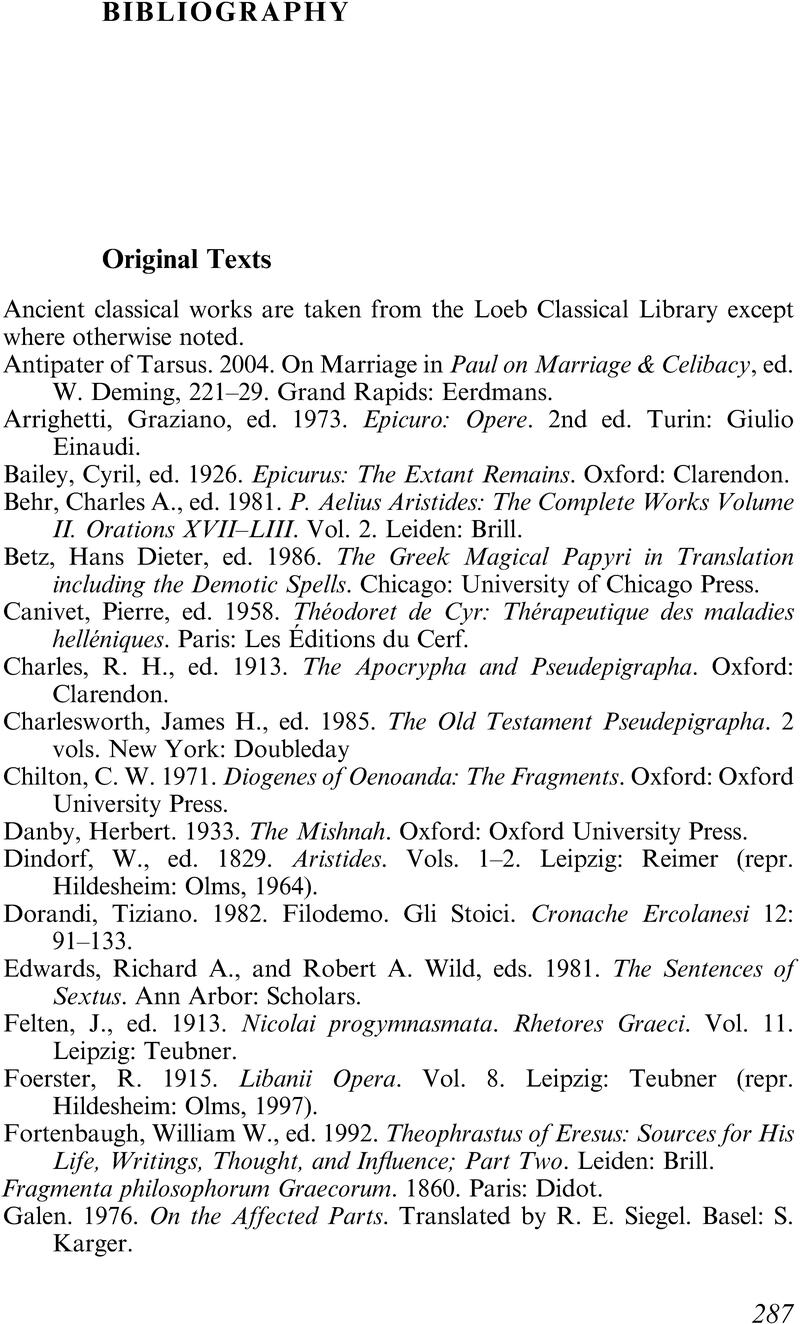Book contents
- Paul and Secular Singleness in 1 Corinthians 7
- Society for New Testament Studies Monograph Series
- Society For New Testament Studies Monograph Series
- Paul and Secular Singleness in 1 Corinthians 7
- Copyright page
- Contents
- Figures
- Tables
- Acknowledgements
- Abbreviations
- 1 Introduction and Methodology
- 2 The Demographic Shape of Secular Singleness
- 3 The Ideological Shape of Secular Singleness
- 4 The Context of 1 Corinthians 7
- 5 The Crux of 1 Corinthians 7
- 6 The Content of 1 Corinthians 7
- 7 Findings and Conclusions
- Appendix Individuals from the Egyptian Census Classified by Age
- Bibliography
- Ancient Sources Index
- Author Index
- Subject Index
- References
Bibliography
Published online by Cambridge University Press: 28 March 2024
- Paul and Secular Singleness in 1 Corinthians 7
- Society for New Testament Studies Monograph Series
- Society For New Testament Studies Monograph Series
- Paul and Secular Singleness in 1 Corinthians 7
- Copyright page
- Contents
- Figures
- Tables
- Acknowledgements
- Abbreviations
- 1 Introduction and Methodology
- 2 The Demographic Shape of Secular Singleness
- 3 The Ideological Shape of Secular Singleness
- 4 The Context of 1 Corinthians 7
- 5 The Crux of 1 Corinthians 7
- 6 The Content of 1 Corinthians 7
- 7 Findings and Conclusions
- Appendix Individuals from the Egyptian Census Classified by Age
- Bibliography
- Ancient Sources Index
- Author Index
- Subject Index
- References
Summary

- Type
- Chapter
- Information
- Paul and Secular Singleness in 1 Corinthians 7 , pp. 287 - 316Publisher: Cambridge University PressPrint publication year: 2024

